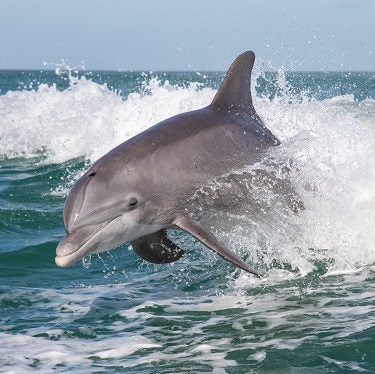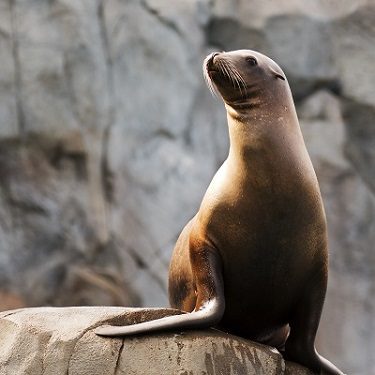Marine Life Encyclopedia
Sharks & Rays
Giant Devil Ray
Mobula mobular
Distribution
Worldwide in tropical and subtropical latitudes
eCOSYSTEM/HABITAT
Coastal to open ocean
FEEDING HABITS
Filter feeder
TAXONOMY
Order Myliobatiformes (stingrays), Family Mobulidae (manta rays and devilfishes)
Giant devil rays are rays that have long wing-like fins enabling them to swim as well as leap from the ocean. As part of the Mobula ray genus, these rays are known for leaping from the water.
Giant devil rays migrate together in relatively small groups. Giant devil rays are filter feeders, catching food on their branchial filter plates as they swim. Giant devil rays eat tiny marine organisms including microscopic plankton, small fish and crustaceans.
Giant devil rays all have a black “crescent” shaped stripe that extends shoulder to shoulder, differentiating them from the similarly looking, manta ray. At maturity the giant devil ray will measure out at an average of 6-9 feet wide, but can continue to grow to a max of 17 feet. Giant devil rays are ovoviviparous , meaning that one large egg at a time is developed inside a female’s body for 12 months before giving birth to a live “pup”. Most litters consist of one large pup, but in some cases, there can be two.
Giant devil rays are in danger from commercial fishing methods. Giant devil rays are often caught as bycatch in commercial fisheries operating in their homes of warmer, more temperate waters. Mobula rays including the devil ray are sometimes caught as bycatch in gill and trawl nets, and by harpoons. Oceana’s responsible fishing campaign works to reduce bycatch and protect non-targeted marine life like giant devil rays.1
Fun Facts About Giant Devilrays
1. All Giant Devilrays have a black “crescent shape” stripe that extends shoulder to shoulder.
2. The Giant Devilray lives in temperate and tropical waters throughout all oceans but is also frequently present in the Mediterranean Sea.
3. Typically, Giant Devilrays give birth to one pup (on a rare occasion two pups), every two to three years.
4. Like whales, Giant Devilrays and other rays within the Mobula genus perform breaches or jumps above the water for unknown reasons.
5. The Giant Devilray is often found alone but may gather in large numbers to feed or reproduce
Resources
Get Involved

Donate Today
SUPPORT OUR WORK TO PROTECT THE OCEANS BY GIVING TODAY
With the support of more than 1 million activists like you, we have already protected nearly 4 million square miles of ocean.

TAKE ACTION NOW
Support policy change for the oceans
Decision-makers need to hear from ocean lovers like you. Make your voice heard!

VISIT OUR ADOPTION CENTER
SYMBOLICALLY ADOPT AN ANIMAL TODAY
Visit our online store to see all the ocean animals you can symbolically adopt, either for yourself or as a gift for someone else.

DOWNLOAD OCEAN ACTIVITIES
HELP KIDS DISCOVER OUR BLUE PLANET
Our free KELP (Kids Environmental Lesson Plans) empower children to learn about and protect our oceans!



